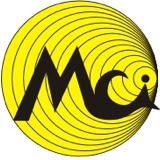Title Page
-
Conducted on
-
Prepared by
-
Location
-
Project Name
-
Project #
-
Type/ Scope of Work Activities
Emergency Information
-
Nearest Hospital
-
Hospital Location
-
Hospital Phone
-
Local Electric Company
-
Electric Company Emergency Phone
-
Local Gas Company
-
Gas Company Emergency Phone
-
Other Local Utility Company
-
Other Utility Emergency Phone
-
Other Local Utility Company
-
Other Utility Emergency Phone
-
Lead Driller Emergency Contact
-
Lead Driller Emergency Phone
-
Drill Crew Member Emergency Contact
-
Drill Crew Member Emergency Phone
-
Drill Crew Member Emergency Contact
-
Drill Crew Member Emergency Phone
Initial Project Site Conditions
UTILITIES & POWER LINES
-
1. Is a copy of the utility locations report available onsite?
-
2. Do field markings/ flags match the utility locations report?
-
3. Are there any overhead power lines?
-
3.a. Can 35 feet of clearance be maintained with the drill mast raised at all planned boring locations?
-
3.b. If 35 feet of clearance cannot be maintained, can the planned boring locations be re-positioned to obtain 35 feet of clearance from the overhead power lines?
-
6. If not, notify Branch/ Department manager to discuss potential need for "Request to Bypass Required Clearance from Overhead Power Lines" in accordance with HSE-004 Drilling Safety Program.
FIELD/ GROUND CONDITIONS
-
4. Are there any other overhead obstructions with the drill mast raised at the planned boring locations?
-
4.a. Discuss safety precautions with drilling crew.
-
5. Are there any potentially hazardous ground/ field conditions (e.g. steep slopes, transformers, etc.)?
-
5.a. Discuss safety precautions with drilling crew
TRAFFIC CONTROLS
-
6. Are any of the planned boring/ drilling locations in or adjacent to a public roadway?
-
6.a. Identify type and placement of traffic controls to protect drilling crew.
OTHER IDENTIFIED HAZARDS
-
7. Are there any chemical or hazardous material hazards?
-
7.a. Are the chemical/ hazardous material concentrations or levels known?
-
7.b. Do the chemical/ hazardous material concentrations or levels exceed OSHA action levels or permissible exposure levels, such that respiratory protection, beyond a N95 dust mask, is warranted?
-
7.c If respirators are required, have all crew members been medically cleared to wear a respiratory, fit tested, and been provided their own respirator to wear for the duration of the project?
-
STOP. DRILLING PROJECT CANNOT PROCEED WITHOUT REQUIRED RESPIRATORY PROTECTION PROGRAM REQUIREMENTS. NOTIFY BRANCH/ DEPARTMENT MANAGER IMMEDIATELY.
-
STOP. DRILLING PROJECT CANNOT PROCEED WHEN CHEMICAL/ HAZARDOUS MATERIAL CONCENTRATIONS OR LEVELS ARE UNKNOWN. NOTIFY BRANCH/ DEPARTMENT MANAGER IMMEDIATELY.
-
8. Any other hazards identified during initial site walkthrough?
-
8.a. Discuss safety precautions with drilling crew
WEATHER/ TEMPERATURE CONDITIONS
-
9. Will drilling crew be exposed to any temperature extremes?
- Yes, heat and humidiy
- Yes, cold and wind chill
- No, temperature is pleasant and clear
-
9.a. Discuss safety precautions related to heat exhaustion, heat cramps, heat stress, and heat stroke with drilling crew.
-
9.b. Discuss safety precautions related to hypothermia, frost bite, and other cold weather safety with drilling crew.
-
10. Will drilling crew be exposed to any hazardous weather conditions (e.g. snow/ice, rain, lightning, high winds, dense fog, etc.)?
- Yes, ice and/or snow
- Yes, rain and/or sleet
- Yes, lightning
- Yes, high winds
- Yes, dense fog
- No, weather is pleasant and clear
-
10.a. Discuss safety precautions related to ice, snow, rain, sleet, and/or dense fog with drilling crew.
-
10.b. Halt all drilling operations, lower mast, store and secure all tools, equipment, materials, and supplies when lightning is within 5 miles of drilling location. Do not resume operations until lighting is outside of 5 miles from the drilling location for a minimum of 30 continuous minutes.
-
10.c. Halt all drilling operations with sustained wind or wind gusts exceeding 40mph. Do not resume operations until winds are below 40mph for a minimum of 30 continuous minutes. Take extra safety precautions with sustained wind or wind gusts between 20-40mph (e.g. increase clearance from overhead power lines and other obstructions, widen traffic control perimeter around drilling rig, store and stow supplies and materials inside the cab or support vehicle, etc.).
Drilling Safety Program Absolutes
-
Review each of the Drilling Safety Absolutes with the Drilling Crew during the Tailgate Safety Meeting
1. Utility Clearance: Drilling operations must not proceed unless and until subsurface utilities have been located, marked, and field verified using any and all available documentation, information, and/or utility locate services. This utility clearance must be documented, with the record available onsite for the duration of the drilling operations.
2. Traffic Control: Where drilling operations will be in or adjacent to any active public roadway, traffic control measures must be planned in advance, and in place for the duration of the drilling operations.
3. Overhead Power Lines: Clearance from overhead utilities and obstructions must be maintained whenever the drill mast is in the raised and upright position. A minimum of 35 feet clearance is required from overhead power lines for the duration of the drilling operations. Where such distance cannot be maintained, written approval must be obtained in accordance with HSE-004 Drilling Safety Program prior to commencement of any drilling, which contain the additional safety controls and precautions that will be implemented for the protection of the drilling crew.
4. Authorized Operator: Lead Driller(s) must successfully complete all required training and demonstrate competency to an Intertek Drilling Trainer/ Instructor before being authorized to solely operate any Company owned/ leased drilling rigs. This authorization must be documented and supported by training and competency records as specified in HSE-004 Drilling Safety Program.
5. Drilling Crew: All drilling operations and project sites must always maintain a minimum of two trained and competent drilling crew members, with one as the Lead Driller. The drilling crew members must have completed all required training and applicable competency demonstrations, with documented records as specified in HSE-004 Drilling Safety Program.
6. Rotating Equipment: At no time, and under no circumstances, will any rotating auger or other rotating or moving drilling equipment be touched by a person or with a tool until the rotation or movement has come to a full and complete stop. No exceptions are permitted under HSE-004 Drilling Safety Program or any other procedure.
7. Leveling Jacks: Leveling jacks are only to be used as intended, to stabilize the drill rig. Leveling jacks must not be used to remove or dislodge tooling or other drilling equipment.
8. Travel Position: All drilling equipment, materials, tools, and/or rig must be secured prior to moving or repositioning the drill rig. The drilling tower, mast, and feed cylinders must be placed and secured in the travel position. All equipment, tools, and other materials must be secured and safely stowed.
Attendance at Tailgate Safety Meeting
-
Other Comments
-
Have each drill crew member enter their name and sign to acknowledge Tailgate Safety Meeting
-
Lead Driller Signature
-
Drill Crew Member Name
-
Drill Crew Member Signature
-
Drill Crew Member Name
-
Drill Crew Member Signature
-
Drill Crew Member Name
-
Drill Crew Member Signature
-
Drill Crew Member Name
-
Drill Crew Member Signature












